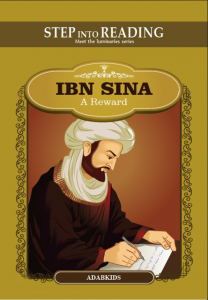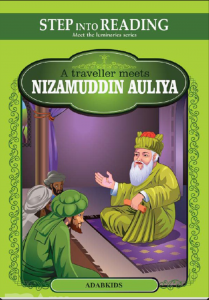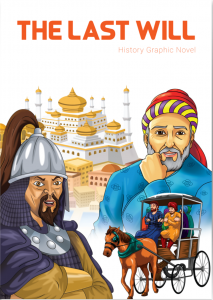By Najiya O, TwoCircles.net
They were a group of Keralites working in the IT field in the land of the Nizam. All had school-going children, who learnt English but not their mother-tongue, Malayalam. These children also had no source of knowledge of their religious and Arabic literature due to lack of such books.
These IT professionals from the Muslim community wanted English books for their children that they could read, enjoy and learn forming their identity simultaneously. When they couldn’t find this kind of resource, they decided to write and publish such books themselves. And thus was born the Adab Kids (www.adabkids.com) in 2015.

Five years after the publication of its first title, the Adab Kids has eight books to its credit, ranging from stories on historical figures and companions of the prophet to graphic novels. The team tries to include what they felt was important but was missing in children’s books available in the market. One such thing was the absence of any stories about the luminaries in Islamic history – scientists, travelers, architects and thinkers who lived after the Prophet and his companions. This led to the series ‘Meet the Luminaries’, introducing important Islamic thinkers and scientists of the past.
Titles and Series of Adab Books
“We have tried to introduce him to the kids by telling a story from his life, so that kids should know of this historic figure,” said Hasim (Managing Director of Adab Kids) to TwoCircles.net. He discusses about the first title that came out from the Adab Kids on Imam Ghazzali, the renowned thinker and philosopher who many young learners should know about. Personalities like him, Hasim opines, would help impart a positive historic sense to the Muslim children of modern times other than helping them create an identity. This series, Hasim adds, has five titles – Imam Ghazzali (jurist, philosopher, theologian and mystic), Hazrat Nizamuddin Auliya (theologian and Sufi saint), Imam Abu Hanifa (theologian), Ibn Sina (philosopher, thinker, mathematician and theologian) and Ibn Haytham (scientist, father of modern optics).

Another title by Adab Kids is ‘The Book of Fools’ published in 2017, which is regarded as a unique series of ‘Classics Retold’. It includes stories from the original works of Hanbali scholar, Ibn al Jawzi. These tales have been retold in a way that children would understand, and has attractive pictures to go along with. The idea behind ‘The Book of Fools’ series is “to impart the importance of intellect by telling the stories of fools,” says Hasim.
Another remarkable series is ‘Golden Tales’ whose first title provide glimpses from the life of the Prophet’s companion and second Caliph, ‘Umar al Farooq.’ ‘The Last Will’ is the first title under the series ‘History through Graphic Novels.’ It narrates the story of the Mongol invasion and devastation of the Islamic empire, followed by the acceptance of Islam by the Mongol rulers through colorful illustrations. A historic timeline of events related to the Fall of the Abbasid Empire and the Mongol invasion is also given in the last pages.
Why the name Adab?
The term ‘Adab’ epitomizes the humanist concerns of classical Islamic education. It is a concept of adab (respect/honor) that stands for the “ethical and practical rules of conduct” deemed praiseworthy in the Islamic communities around the world. The website of the Adab Kids gives a nice explanation for the same, under the blog titled ‘Need for Adab’. Some of it is denoted in the words “the discipline that assures the recognition and acknowledgment of one’s proper place in relation to one’s self and society. ”

Additional connotations of adab include the knowledge necessary for a certain profession; good breeding (proper upbringing of children, their morals, and their good behavior); courtesy; etiquette, refined manners; aristocratic learning; and urbanity.
The initial team of six friends in Hyderabad, from various areas of Kerala, has now spread in several parts of the country and abroad. The group has a registered office in Kottayam from where the books are published. The stories are written by the group themselves who also serve as content editors and developers while professional artists do the illustration. Discussions with those outside the team have also helped them in the selection and management of topics and titles.
Feedback from readers
“Feedback from parents of young readers is generally positive,” says Hasim, but adds that there have been certain issues from groups and distributors regarding the drawing of faces, the selection of the historic figures etc. After five years and eight titles, Adab Kids has faced several issues he says. Among them “major trouble has been regarding the depiction/illustration of people.” After several experiences and discussions, the team decided that Adab Kids would have pictures with faces of people, but not for prophets and the companions.

In the modern times when children are more attracted to videos than books, Adab Kids cannot ignore immediate interests of the young generation. The publication is planning to upload video stories of some of the books on its YouTube channel too, the first of which is expected to be published this month. Adab Kids’ books are available in major Muslim bookstores in Kerala and Hyderabad. The books can also be bought online on their website, as well as on Amazon and Flipkart.
“Upcoming titles from the publication are about the Abbasid Caliph Harun al Rasheed and Imam al Tabari, which have been completed and will hit the stands soon,” informed Hasim.


